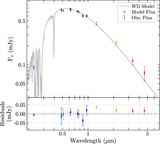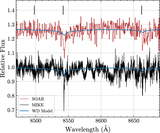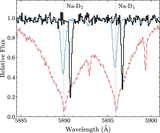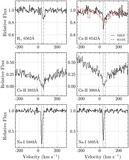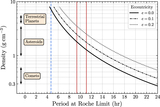Image Details
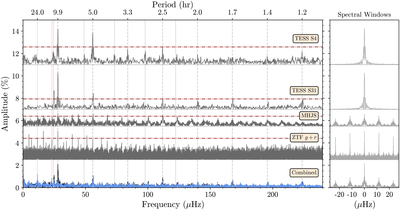
Caption: Figure 1.
Left: periodograms for different selections of time-series photometry, each vertically shifted for clarity, with the combined periodogram shown in black at bottom. MHJS stands for the combination of McDonald, HAO, JBO, and SAAO photometry, and horizontal red dashed–dotted lines denote the 0.1% false-alarm probability levels for each selection of data. The PA (9.937 hr) period and its first seven harmonics are denoted with vertical dashed lines, while the vertical dotted lines denote the PB (11.2 hr) period and its first four harmonics. Vertical red hatched lines are placed at 11.6 and 23.2 μHz to mark the 1-day and 0.5-day periods, respectively. Peaks at these frequencies only show up in the ground-based data, and we consider them to be artifacts caused by the diurnal sampling of those light curves. The overplotted blue periodogram at bottom represents the combined data with the best-fit PA and PB values determined with PERIOD04 prewhitened, along with 30 harmonics related to PA. Some significant residual power is still present after prewhitening, especially at harmonics of PA. For the MHJS periodogram, we excluded the single McDonald light curve from 2020 October 19 to reduce the amount of aliasing in the spectral window. Right: spectral window of each data set, with the same x-axis scaling as in the left panel, and amplitudes scaled to the highest peak in the corresponding periodogram.
Copyright and Terms & Conditions
© 2021. The American Astronomical Society. All rights reserved.






